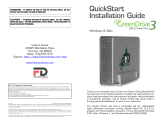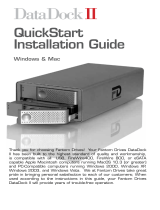
2
Contents
Getting Ready.............................................................................................................3
Connecting an Amp and Speaker System...............................................................................................3
Turning On the Power...............................................................................................................................4
Adjusting the Display Contrast (LCD Contrast)........................................................................5
Turning Off the Power ...................................................................................................................5
Listen to the Demo Song...........................................................................................6
Try Out the Sounds....................................................................................................7
Selecting Patches and Playing the Sounds..............................................................................................7
Selecting Patches from the List......................................................................................................8
Auditioning Patches with Phrases (Phrase Preview) ................................................................9
Selecting Patches by Category.......................................................................................................9
Selecting Favorite Patches (Favorite Sound) ........................................................................................11
Playing Percussion Sounds with the Keyboard (Rhythm Set)...........................................................12
Layering Two or More Patches (Layer Performance).........................................................................14
Splitting the Keyboard to Play an Ensemble (Split Performance).....................................................16
Using the Fantom Effects.........................................................................................................................18
Turning Effects On and Off .........................................................................................................18
Try Out the Various Performance Features...........................................................19
Moving Your Hand Above the D Beam Controller to Apply Effects (D Beam Controller)..........19
Changing D Beam Controller Settings.......................................................................................20
Using Knobs and Buttons to Modify the Sound in Realtime (Realtime Controller) ......................21
Changing Realtime Controller Settings .....................................................................................22
Playing Arpeggios (Arpeggiator)...........................................................................................................23
Changing Arpeggiator Settings ..................................................................................................24
Triggering Rhythm Patterns from a Single Key...................................................................................25
Changing Rhythm Pattern Settings............................................................................................26
Other Performance Features...................................................................................................................27
Velocity/Aftertouch .....................................................................................................................27
Pitch Bend/Modulation Lever....................................................................................................27
Octave Shift (Oct)..........................................................................................................................27
Transpose (Trans)..........................................................................................................................28
Hold Pedal......................................................................................................................................28
Control Pedal.................................................................................................................................29
Try Out the Demo Disk ............................................................................................30
Playing a Song Directly from Disk (Quick Play) .................................................................................30
Playing a Group of Songs (Chain Play).................................................................................................31
Playing a Pattern by Pressing a Single Key (RPS) ...............................................................................32
Using the Sequencer to Create a Song..................................................................34
Erasing the Song from Internal Memory (Song Initialize) .................................................................34
Selecting a Multitimbre............................................................................................................................35
Use Rhythm Patterns to Create a Drum Track.....................................................................................37
Selecting the Track to be Recorded.............................................................................................37
Choosing a Recording Method ...................................................................................................37
Playing and Recording Rhythm Patterns..................................................................................38
Use the Arpeggiator to Record a Bass Track........................................................................................39
Use the Keyboard to Record a Melody Track ......................................................................................40
Saving the Recorded Song to Disk.........................................................................................................42
Formatting a Disk..........................................................................................................................42
Saving a Song On a Disk..............................................................................................................44
Editing the Song You Recorded .............................................................................................................46





















